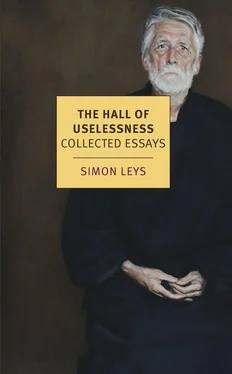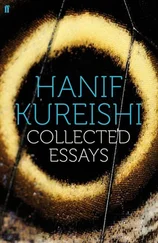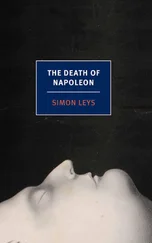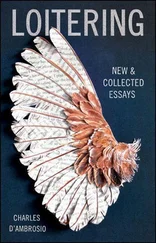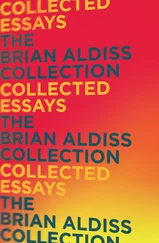Yet the fact is that Kafka himself found in Chesterton a mirror for his own anxiety. From the testimony of his young friend and admirer Gustav Janouch we know that he particularly admired The Man Who Was Thursday (which is indeed Chesterton’s most accomplished and most haunting work of fiction). On the subject of this book, it should be noted that Chesterton himself once complained that most readers seemed never to register its full title: The Man Who Was Thursday: A NIGHTMARE . But this last word certainly did not escape Kafka.
When Chesterton was still an idle and dreamy young man who had half-heartedly drifted into art school, he underwent a shattering crisis. He experienced a terrifying confrontation with evil — evil not as an external menace, but as a presence in the mind, a spiritual reality generated from within himself. At that moment, he had the intuition of the central paradox which he was to explore all his life and would finally sum up near the end of his career in his masterly book on Thomas Aquinas: Christianity has reversed the old Platonic belief that matter is evil and immaterial spirits are good. In fact, the opposite is true: having created the world, God looked on all things and saw that they were good:
There are no bad things, but only bad uses of things. If you will, there are no bad things but only bad thoughts; and especially bad intentions… But it is possible to have bad intentions about good things; and good things, like the world and the flesh, have been twisted by a bad intention called the devil. But the devil cannot make things bad; they remain as on the first day of creation. The work of heaven alone is material — the making of a material world. The work of hell is entirely spiritual.
As a young man, for a certain time Chesterton felt he was in danger of becoming trapped within the spiritual hell of his own hyperactive mind — and for quite a while, he literally tottered on the edge of madness. In this situation, it was poetry that finally preserved his sanity. For the gift of the poet (which is also the gift of the child) is the ability to connect with the real world, to look at things with rapt attention. Both the poet and the child are blessed with what Chesterton called “the mystical minimum”: the awareness that things are —full stop. “If a thing is nothing else, that is good; it is —and that is good.”
By the way, it is interesting to note that, at the other end of the earth, a thousand years ago, the great mystics of China and Japan (whom Chesterton never knew) developed exactly the same view. I am referring here to the masters of Zen Buddhism, who taught only through poems, paintings, paradoxes, jests and riddles. For instance, in a classic anecdote, a young disciple asks an old monk, “What is the Buddha?” The master replies, “The Buddha is a two-pound cabbage from the vegetable market in Chaozhou.” The lesson is, hold on to reality: if you can fully grasp but one fragment of reality, however humble, in its irreducible concreteness and singularity, you hit the rock-bottom of truth, and from there, can reach salvation. Hold on to reality — just like Robinson Crusoe holds on, for dear life, to the things he salvaged from the wreck of his ship. “Two guns, one axe, three cutlasses, one saw, three Dutch cheeses…”
Secondly, I said that Chesterton is not merely a poet — I said he is “ a poet who dances with a hundred legs .” The phrase is actually borrowed from Chesterton himself. He used it in an interview to describe the most extraordinary character he ever created: Sunday, the enigmatic giant with two faces — huge, boisterous, elusive, who pulls all the strings in his sublime metaphysical fable, The Man Who Was Thursday . He wrote the book when he was barely thirty, but strangely enough, twenty years later, he himself in physical appearance came to look like Sunday, as various friends and visitors were to remark. (See, for instance, a letter which Valery Larbaud wrote to Paul Claudel, reporting on a visit he had made to Beaconsfield — or again, Bernard Shaw’s affectionate description of his old sparring partner and friend as “A man-mountain, not only large in body and mind beyond all decency, but [who] seems to be growing larger as you look at him.”)
But the practical problem for us is this: how do you sketch the portrait of a man who dances with a hundred legs? How do you keep his image in focus? This is an impossible task — and therefore don’t blame me if you find that my talk is hopelessly rambling. But in the end this may not greatly matter, for I shall draw many quotes from Chesterton’s writing, and these quotes alone should provide you with enough incentive to turn back to his works — what more could I wish for?
* * *
When I was invited here, I confess I felt very hesitant at first at the idea of addressing a Chesterton Society on the subject of Chesterton. I have no particular expertise on this topic. The great edition of Chesterton’s Collected Works which is now being published in the United States will count some fifty volumes: half of them have already appeared, and of this half, my own reading has barely covered one fifth (though I am pursuing my exploration with endless delight). As you see, I am a hopeless amateur. Yet, from a Chestertonian point of view, this very lack of qualifications should constitute the best qualification. Chesterton always attached special value to this notion of the amateur, as opposed to the professional. In his Autobiography , he composed a loving portrait of his father, whose occupation was in real estate (in fact, the old firm is still active today, and when walking in the streets of London — or Sydney, or Perth — you can still see the name of Chesterton posted on houses for sale) but who at home, for the delight of his children, cultivated a wide range of talents and hobbies: drawing, painting, photography, magic lanterns, stained glass:
There had been some talk of his studying art professionally in his youth; but the family business was obviously safer, and his life followed the lines of a certain contented and ungrasping prudence. He never dreamed of ever turning any of his plastic talents to any mercenary account, or of using them for anything but his own private pleasure and ours. The old-fashioned Englishman, like my father, sold houses for his living but filled his own house with his life. To us (children) he appeared to be indeed The Man with the Golden Key, the magician opening the gates of goblin castles… but all this time he was known to the world, and even to the next door neighbours, as a very reliable and capable, though rather unambitious businessman. It was a very good lesson in what is also the last lesson in life: that in everything that matters, the inside is much larger than the outside. On the whole, I am glad that he was never a professional artist. It might have stood in his way of becoming an amateur. It might have spoilt his career — his private career. He could never have made a vulgar success of all the thousands of things he did so successfully.
The superiority of the amateur over the professional is an important and provocative notion — all the more provocative because it is not commonly held in Western culture, where a more general view usually considers that only the professional can be serious, whereas the amateur’s approach is necessarily tainted with frivolity (we shall see what Chesterton had to say on the subject of seriousness versus frivolity). For me, Chesterton’s position on this question has a particular appeal, since it precisely coincides with a basic tenet of Chinese classical aesthetics — a field that has occupied my interest for many years. This principle should in fact have a deep and universal relevance. Think of it: you can, and should, be fully professional insomuch as you happen to be a real estate agent, a solicitor, a grave-digger, an accountant, a dentist, etc. — but you could hardly call yourself a professional poet, for instance. If, on a passport or an immigration form, you were to write under “Occupation” the words “Human being” or “Living,” the bureaucrat behind his counter would probably wonder if you were in your right mind.
Читать дальше
